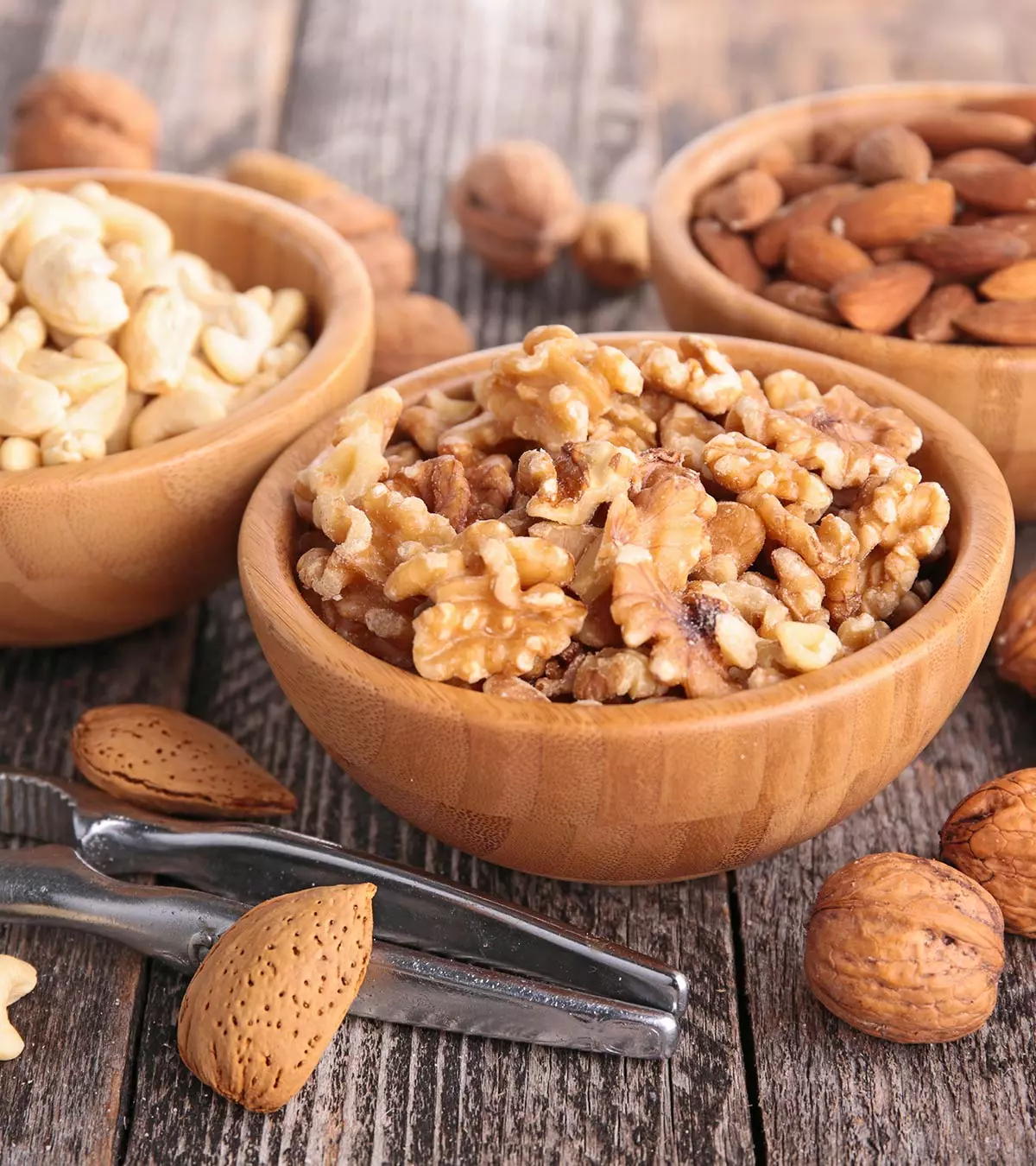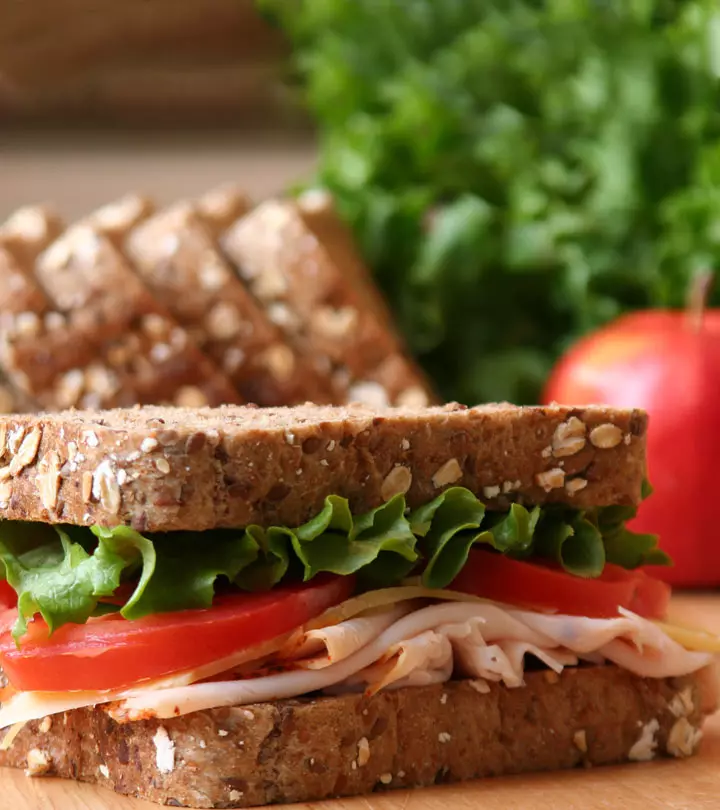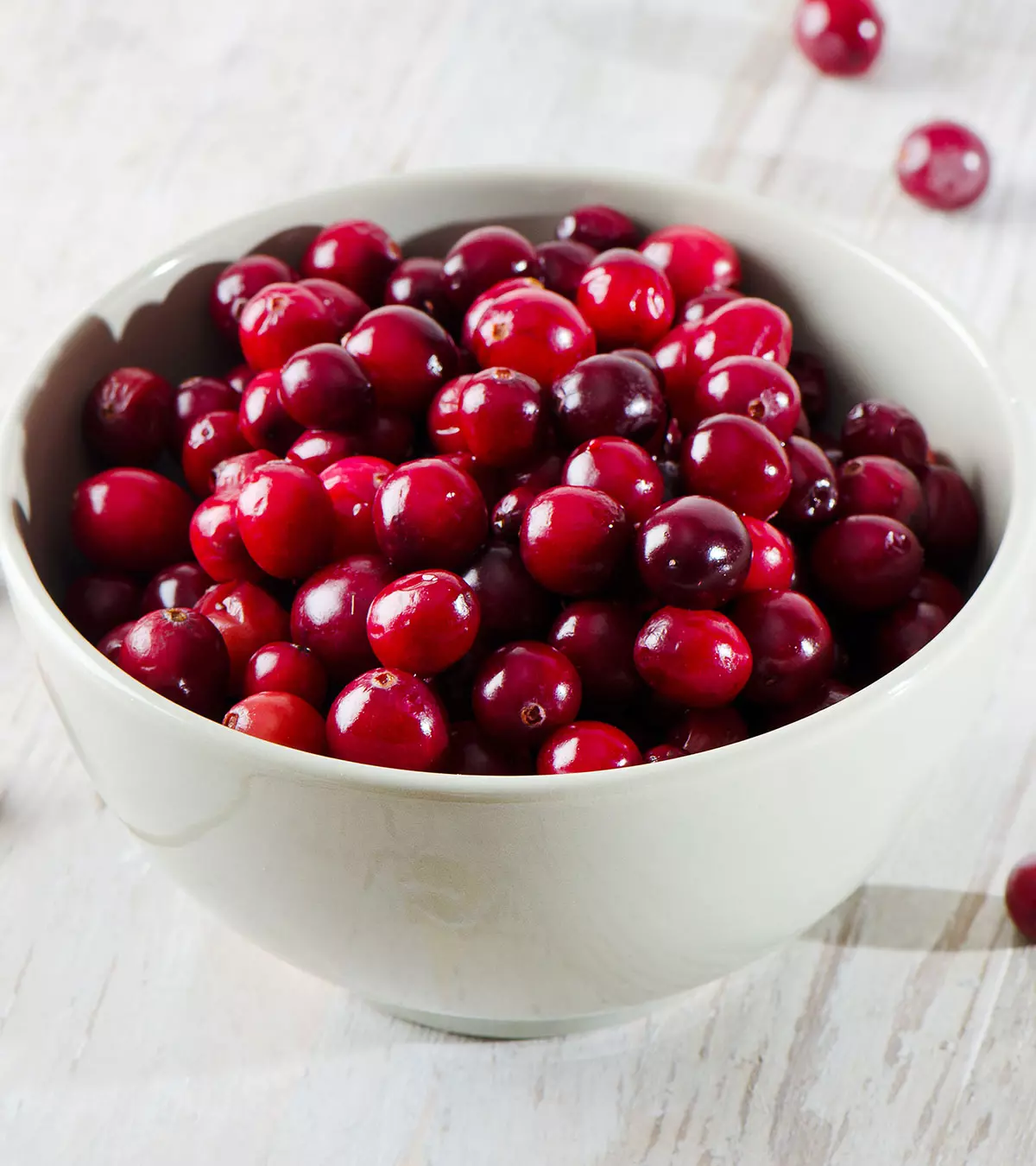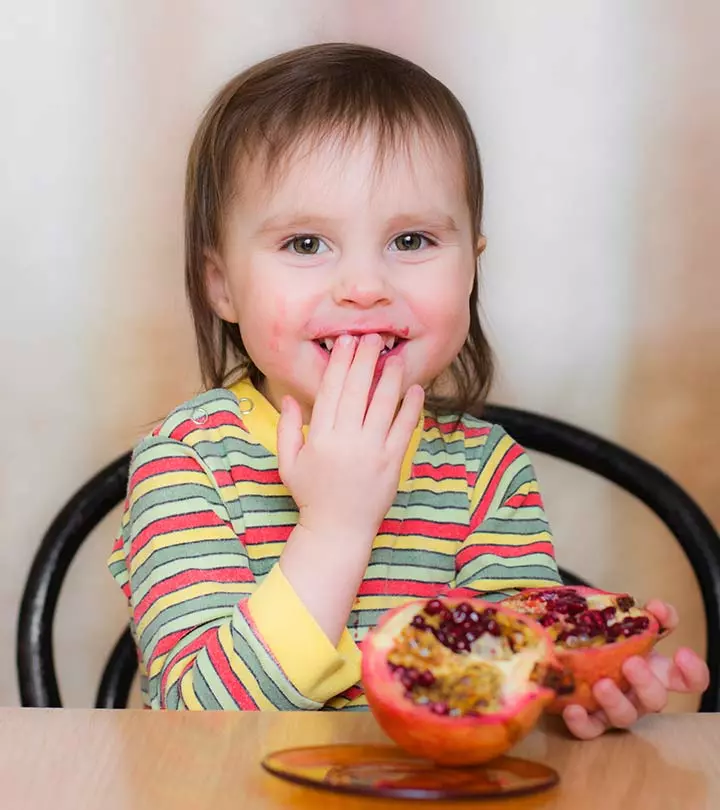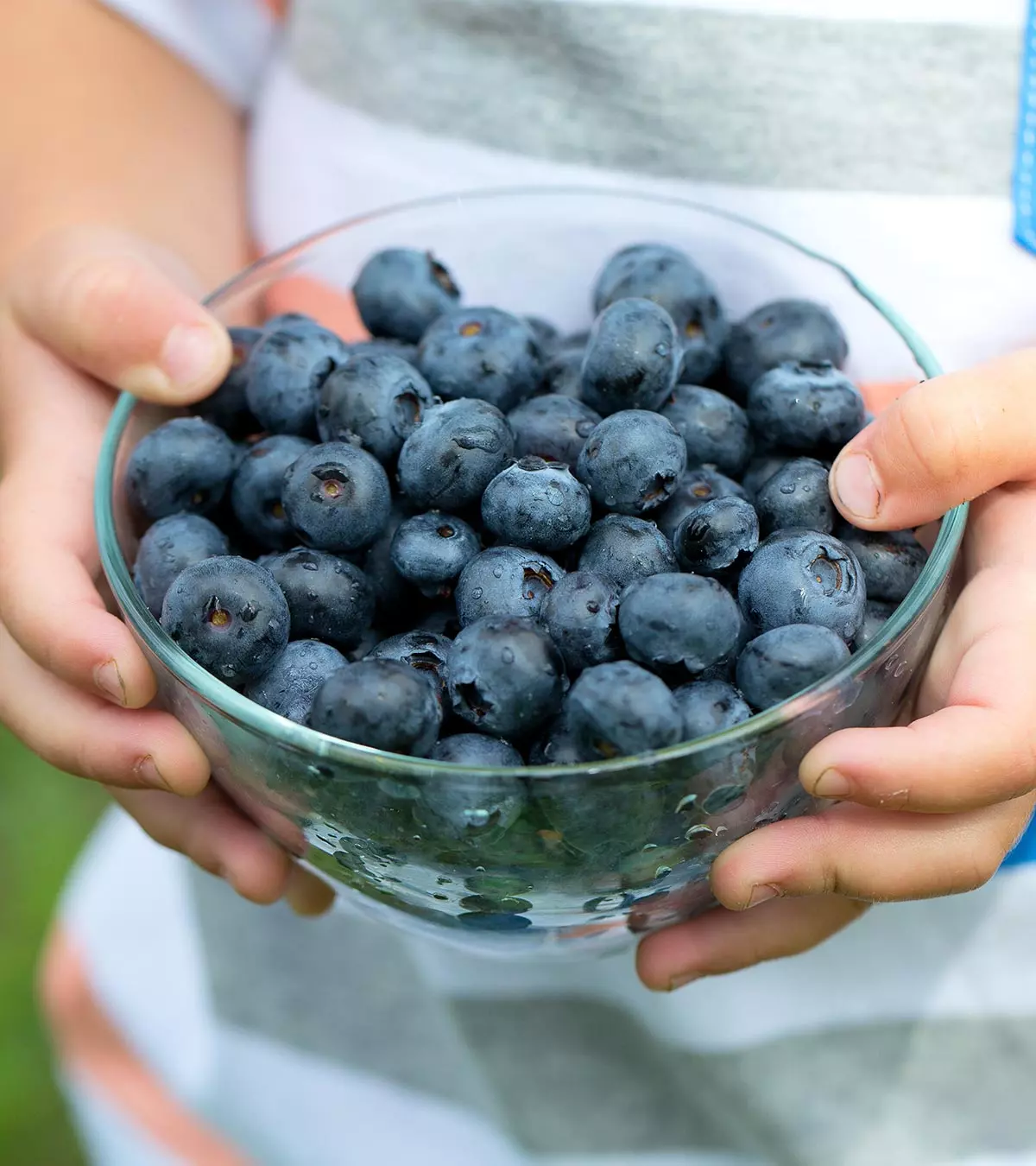
Image: Shutterstock
For most children, three main meals (breakfast, lunch, and dinner) might be insufficient. According to experts, young children (aged 2 to 8 years old) should have at least two snacks during a day, while older children (8 years and older) should have at least one snack with their major meals (1). Vegetable snacks for kids are nutritious, well-balanced snacks that also help children meet their daily vegetable requirements. They ensure that children have enough energy throughout the day and reduce feelings of hunger, which can lead them to consume high-calorie, high-sodium processed foods and overeat (2). In this post, we share some easy-to-prepare, nutritious, tasty, and healthy veggie snack ideas for kids to keep them satiated all day.

Key Pointers
- Vegetable snacks reduce hunger pangs, provide adequate nutrition, and keep children energetic.
- Veggie rainbow with hummus, zucchini boat, mini sandwich skewers are some good snack options that are easy to make and loaded with nutrition.
- Explore mini veggie burgers, vegetable crackers, cucumber cups, and many interesting snack ideas as you scroll through.
Nutritious And Tasty Vegetable Snacks For Children
According to the Dietary Guidelines for Americans 2015-2025, the recommended amount of vegetables per day is 2 1⁄2 cups or 2,000 calories (3). However, children are often averse to having vegetables. Studies by the Centers for Disease Control and Prevention showed that in 2015-2018, around 91% of children and adolescents consumed any vegetables on a given day. Out of these, children were most likely to have red or orange vegetables and starchy vegetables more than dark green vegetables (4). But there are ways you can include all kinds of vegetables in your child’s diet and let them reap the benefits. Below are some unique, versatile, healthy, and easy-to-make vegetable snack ideas for children.
1. Ants on a log snacks
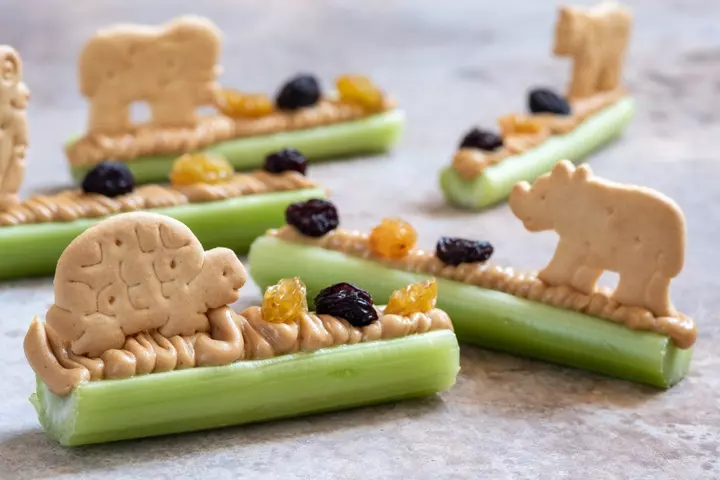
Ants on a log is a common yet attractive and nutritious snack for young children. To prepare this mouth-watering snack, you need celery stalks, a filling (sauce, dip, or low-fat cheese), seeds, diced dried fruits or fresh fruits, and animal crackers (for embellishment). Celery is a rich source of minerals such as calcium, potassium, and magnesium (5). Plus, its crunchy texture makes it appealing to children.
Once the ingredients are ready, cut the celery stalks in two halves and fill them with healthy dips or sauces, such as guacamole or hummus. Next, top the filling with seeds, nuts, dried or fresh fruits, and decorate with animal crackers. The snack can be whipped up in just five minutes!
 Nutrition fact
Nutrition fact2. Veggie rainbow with hummus
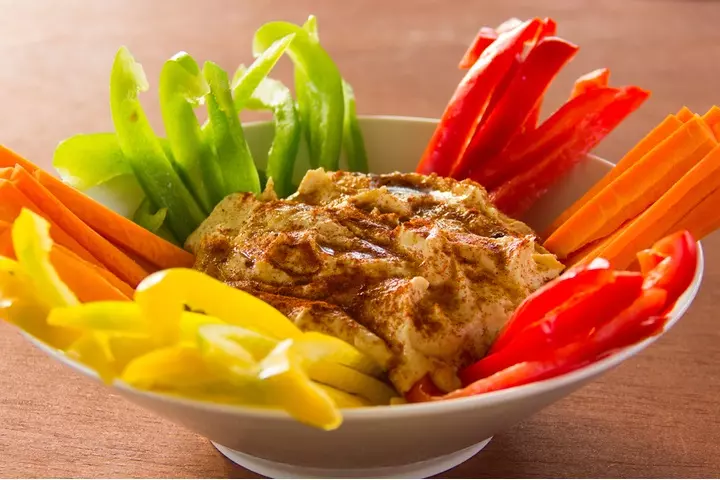
Bell pepper, cucumber, and carrot are not only colorful but also nutritious. You can feed these veggies to your child by preparing the “veggies rainbow with hummus” snack to meet your child’s fiber needs.
To make this snack, you need raw, pan-fried, sautéed, grilled, or roasted veggie sticks with homemade hummus. If hummus sounds too bland, try other healthy dips, such as lemon-herb white bean dip or butternut squash dip.
3. Colorful crostini
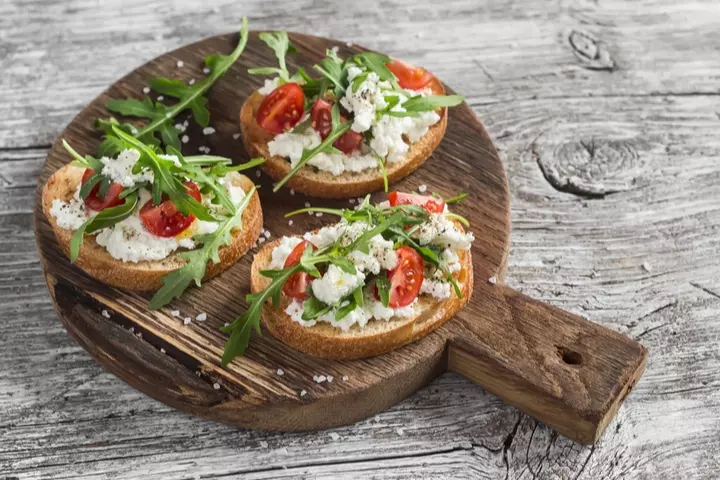
Crostini is an Italian appetizer with a toasted or grilled bread base and toppings. You can modify this mini appetizer into a hearty snack by experimenting with the ingredients.
You could select whole-grain or multigrain, seeded bread to make the base, and then choose different, seasonal, sautéed, pan-fried, or grilled veggies to make the toppings.
Finally, add some high-protein, low-fat cheese, such as cottage cheese, Swiss cheese, or ricotta, and some aromatic herbs, such as oregano, dill, or lemongrass to make the snack tempting.
4. Veggie chips
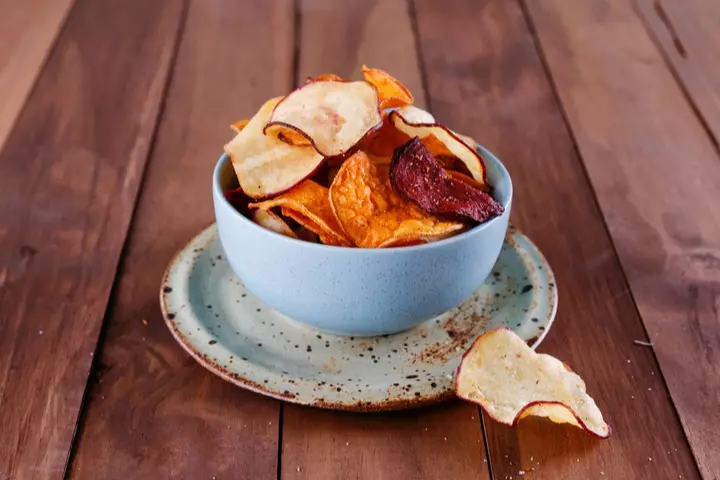
Beetroot, sweet potato, zucchini, cauliflower, and plantain are some veggies that can be turned into crispy chips, making healthy snacks for kids. All you need to do is cut these veggies into thin slices, dehydrate them, and then bake them. While baking, remember to add little to no oil and salt to these chips.
You can feed them to children in moderation with yummy veggie dips, such as garlic and dill yogurt dip, ranch dressing, Egyptian beetroot dip, or tuna dip.
5. Zucchini boat
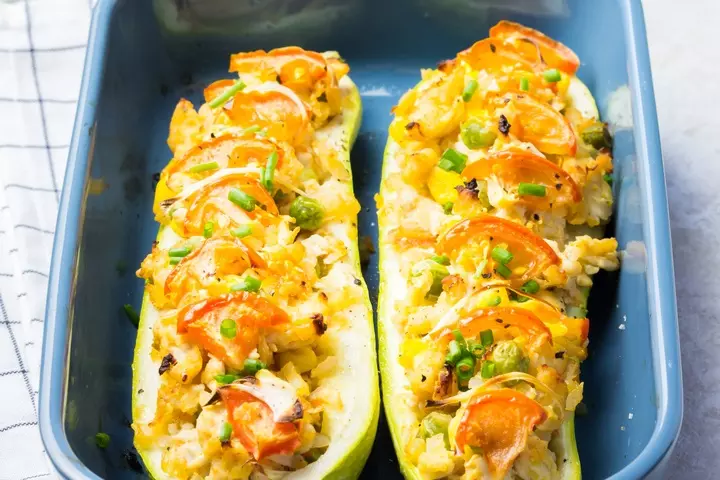
Zucchini boat is a fun and versatile dish to serve as a snack or during main meals. To make this tasty snack, you need peeled zucchini (cooked or baked) and vegetable filling. Red onions, green pea, carrot, corn, sweet potato, arugula, and mushrooms are some veggies that usually go into the filling.
In addition, you can add low-fat cheese, herbs, and protein-rich foods such as tofu to make the snack more delectable.
6. Tartlets with roasted veggies
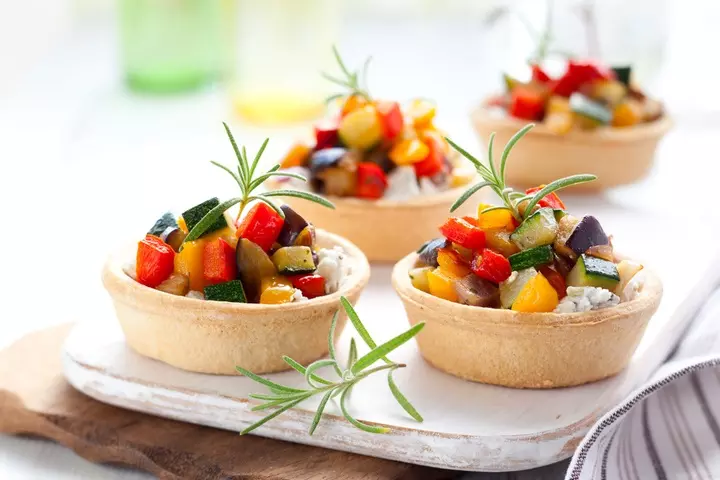
A tartlet or tart is a baked fruit-based French dish that can be turned into a vegetarian savory dish with a little bit of experimentation. You can make savory tartlets by filling an open-top pastry base with veggies and cheese.
Alternatively, you can use some protein foods, such as cottage cheese and tofu, to enhance the snack’s nutritional value, taste, and texture.
 Point to consider
Point to consider7. Mini sandwich skewers

To make a sandwich skewer, all you need to do is arrange mini bread, veggies, and cheese slices on the skewer. You can follow any order or arrangement you like and add as many veggies and types of cheese as you wish. The goal is to make a mini sandwich skewer that is colorful, tasty, and nutritious.
Sarah, a mother of three, emphasizes the importance of food presentation for children’s enjoyment. She explains, “They (her children) go Bonkers for fruit slices on skewers, ‘ghosty bananas’ (half bananas with two chocolate chips for eyes), or their names written with carrot sticks (i).”
8. Mini veggie burgers

A burger is an all-time favorite for several children but is often not healthy. However, you can make it portion-controlled and healthy by trying a mini veggie burger recipe.
To make a mini burger, make mini burgers at home or buy them from a store. Then, prepare mixed vegetable patties to go between the buns. Finally, you can add mixed cheese and herbs, such as dill, to enhance the snack’s taste and flavor.
9. Savory parfait

Parfait is a French frozen dessert usually made with cream, sugar, and egg, due to which it’s high in calories. But you can conveniently tweak this traditional dessert’s ingredients and convert it into a savory vegetable snack for children.
First, replace cream and eggs with low-fat, plain Greek yogurt and add some texture by using cereal, such as cooked quinoa.
Then, add cooked, seasonal veggies, such as pumpkin, to add color, flavor, and nutrients to the final dish. Finally, include nuts (almond and pecans), seeds such as sesame and flax, and herbs, such as cinnamon, to make the snack more nutritious, flavorful, and alluring for children.
10. Vegetable crackers

Whole wheat or whole-grain crackers with milk are a common evening snack for several children. However, you can make this simple snack attractive by adding different flavorful veggie toppings to it. Take various seasonal veggies and pan-fry or sauté them in olive oil. Next, add feta or ricotta cheese, herbs, and seasonings. Top this filling onto the crackers, and your delicious snack is ready. Serve it with yogurt dip, salsa sauce, or any other dip or sauce of your choice.
11. Baby frittata

Frittata is an easy-to-make, on-the-go, egg-based dish people eat across meals. You can turn this delicious dish into a tasty, kid-friendly snack by making mini baby frittatas in muffin tins to keep their size small. Then, add several veggies, cottage cheese, and tofu to diversify the snack’s flavors and nutritional value.
 Quick tip
Quick tip12. Cucumber cup
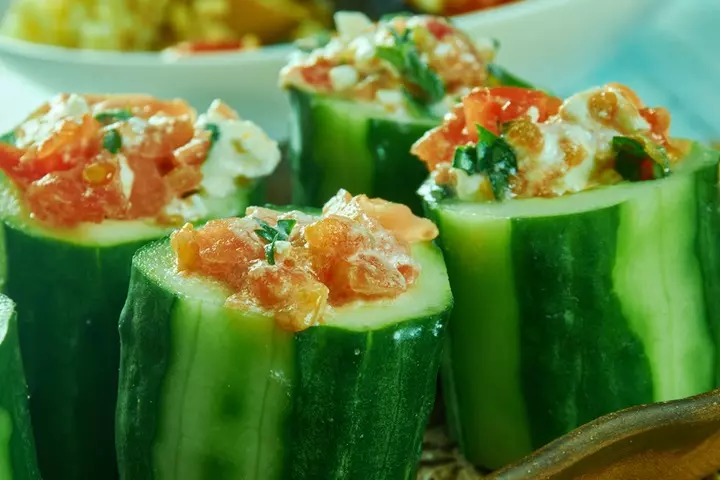
The cucumber cup is a quick, refreshing, and portable snack you can make differently. Here’s one way to make it—cut a cucumber into one- or two-inch thick slices and scoop out their seeded flesh. Mix this seeded flesh with Greek yogurt, cheese, herbs, and seasonings and blend them into a smooth mix. Add finely chopped and cooked veggies, such as onion, chives, parsley, bell peppers, mushrooms, and mix them with the seeded flesh mix. Fill this mix into the cucumber cups and serve. Cucumber is a great snack for summers as it provides 95.9g water per 100g along with other essential nutrients (8).
13. Baby bruschetta

Bruschetta is an Italian delicacy made with grilled bread rubbed with olive oil, garlic, and salt. You can make several variations of this delectable snack by modifying the toppings and including several chopped vegetables and herbs. Alternatively, you can experiment with the bread and choose rustic bread, toasted baguette, or ciabatta to make this snack.
14. Baked zucchini sticks with guacamole
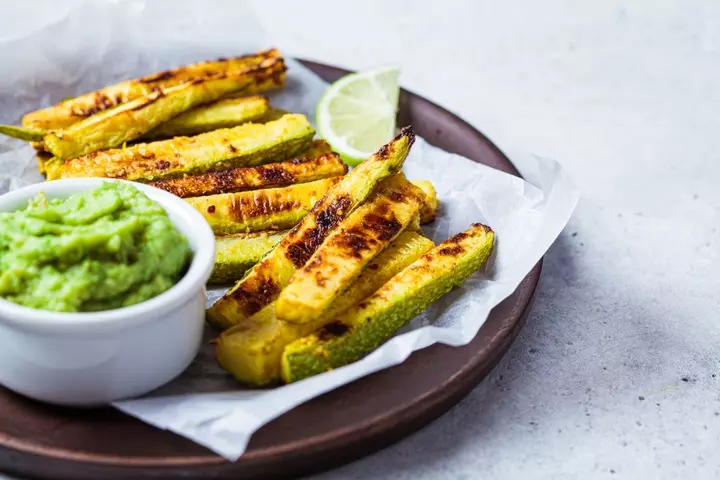
Zucchini or courgette is a healthy veggie that some children do not like to eat when boiled or curried. So, add some twist to the zucchini and bake crunchy zucchini sticks. Zucchini sticks are great finger food children can enjoy eating with different dips, such as guacamole and tahini. They are a perfect choice for young children aged two to three years—children who are still honing their pincer grasp. Zucchini is a rich source of calcium, magnesium, and phosphorus (9).
15. Vegetable taco cups
Taco is a Mexican dish made of wheat or corn tortilla stuffed with veggies and cheese. Make this yummy dish snackable for kids by baking the tortillas into cups and filling them with fresh veggies, cream cheese or Greek yogurt, chopped seeds, nuts, dried fruits, and herbs.
16. Quinoa salad jar
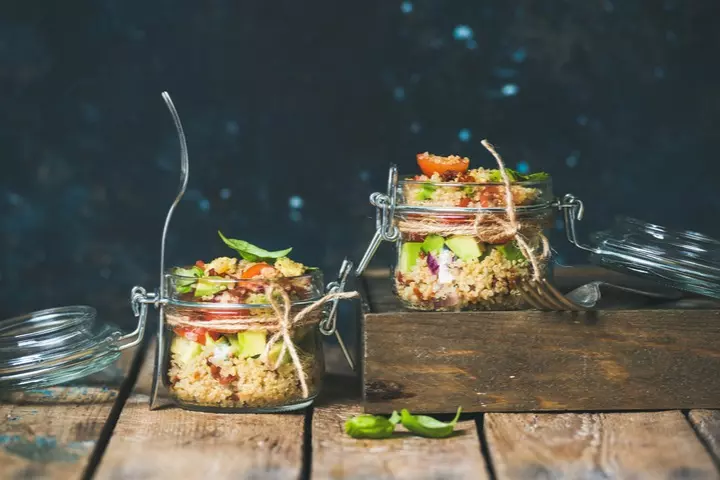
A quinoa salad jar is a healthy, low-calorie, easy-to-make snack that children can easily carry and eat anytime, anywhere. To make this nutritious snack, mix cooked quinoa with pan-fried, sautéed, or steamed veggies, such as corn, mushroom, zucchini, kale, and cherry tomatoes. One cup of cooked quinoa can provide 39.4g carbohydrates, 5.18g fibers, and other essential nutrients (10). Mixed with the goodness of vegetables, this dish becomes a complete meal.
You can also add seeds and chopped nuts or dried fruits with Greek yogurt or pesto sauce to enhance the snack’s flavor, texture, and nutritional density.
17. Eggplant pizza slices
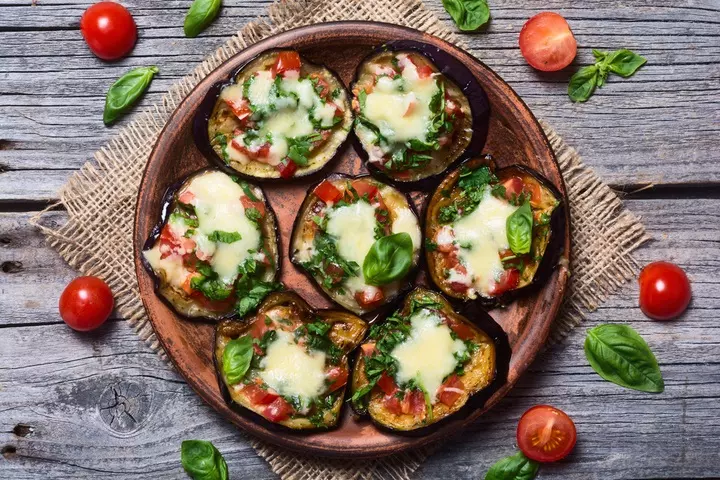
Pizza is a versatile dish that children love to relish. You can make a healthy pizza at home using several ideas. For instance, you can make an eggplant pizza using eggplant slices as a pizza base topped with different seasonal veggies and cheese. A single eggplant of about 100g can provide 5.37g protein, 32.2g carbs, and various minerals (11). Add homemade pizza sauce, salsa, or pesto to make these pizza slices flavorful and attractive. You can also prepare this as finger foods for kids at birthday parties.
18. Rice cakes
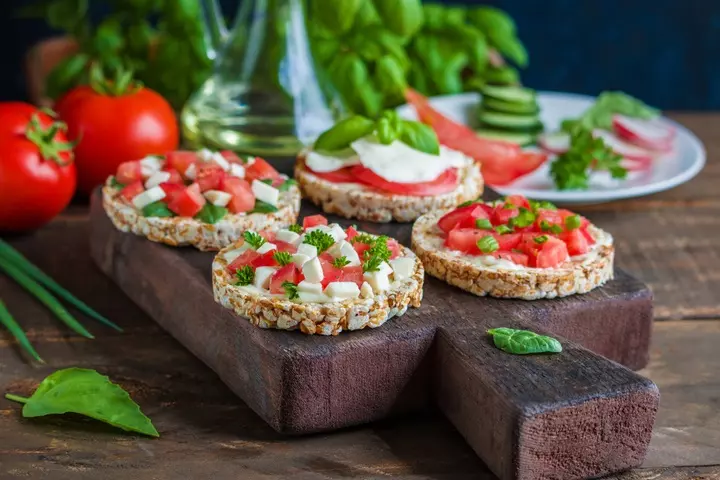
Rice cake is a simple but high-fiber snack made from puffed red, white, or brown rice. It is one of those high-fiber foods for kids that they enjoy without complaint. You can buy it from the market or make it at home and enhance its nutritional value by topping it with veggies mixed with seasoning and herbs. You can also add yogurt or cheese to make a customized rice cake for your child.
19. Vegetable muffins
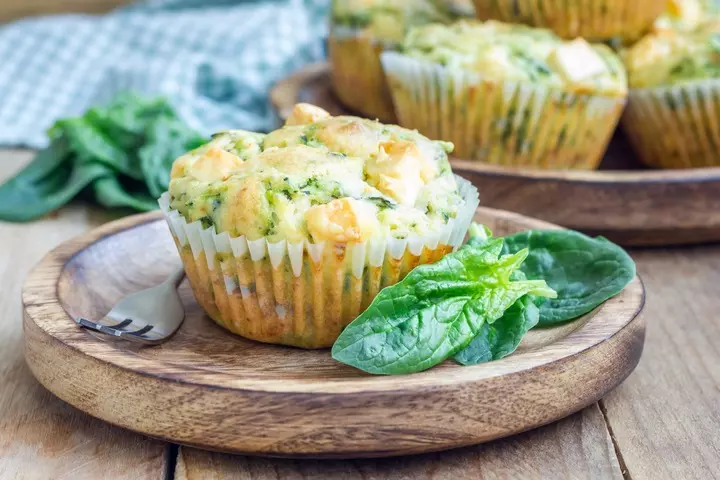
A muffin is a classic snack that has several sweet and savory varieties. You can serve your child savory muffins to let them enjoy some veggies that they usually don’t like eating. Also, add a protein source, such as pulses, legumes, beans, cheese, cottage cheese, or tofu, to make the muffin more nutritious.
20. Zucchini spaghetti with pesto

Spaghetti is traditional Italian pasta made from durum wheat and semolina. But did you know that you can make spaghetti with zucchini? Yes, you can grate zucchini in spirals using a vegetable spiralizer and turn it into a flavorsome snack for your children.
Add different veggies, pesto sauce, and chopped nuts to the spiraled zucchini and pan-fry everything for seven to ten minutes. Your tasty snack is ready!
21. Rainbow pizza

Though conventional pizzas are not healthy for children, this savory dish overcomes drawbacks. It is colorful and packed with the goodness of various vegetables. Use cherry tomatoes, orange bell peppers, zucchini, corn, purple cabbage, and red onions to create the rainbow effect, the greatest attraction for children. Using a whole wheat or multigrain pizza base adds to the health quotient.
22. Mixed veggie pull-apart bread

A cheesy pull-apart bread can be the perfect medium to sneak in veggies for picky eaters. You can finely chop celery, bell peppers, and green onion and add to the bread dough. You may add fried minced meat to make the snack more flavorful and protein-rich.
23. Fruit and vegetable smoothie
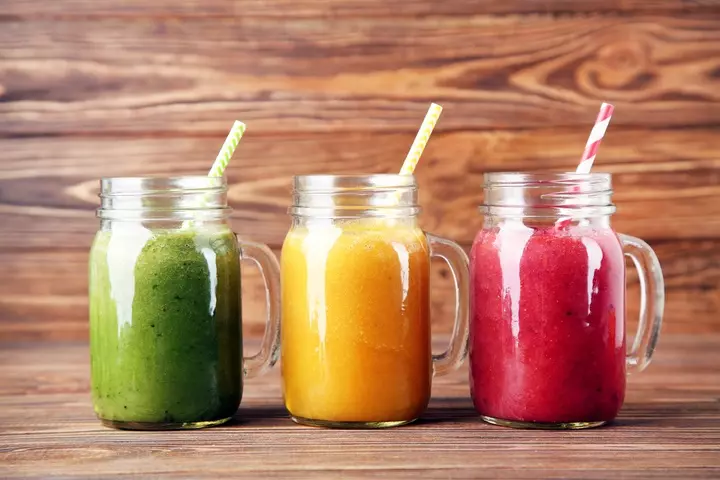
When you have less time to make a snack, a fruit and veggie smoothie is a good choice. Smoothie is a tasty beverage made with fruits, vegetables, or a mix of both. Pumpkin, spinach, avocado, baby spinach, and kale are some nutritious veggies that you can use to make a tasty smoothie.
In addition, you can add oats, nuts, and seeds to enhance the smoothie’s overall nutritional quality. Here are some smoothie recipes you can try.
Frequently Asked Questions
1. How many vegetables should a child eat a day?
The daily vegetable requirement for children is one cup for 2-3-year-olds and one and a half cups for 4-8-year-olds. Girls aged 9-13 years are recommended to have two cups, while boys of the same age are recommended to have two and a half cups (12).
2. What are some tips to encourage kids to try new vegetable snacks?
You could involve your kids in the snack preparation process by having them cut fruits and vegetables into fun shapes using cookie cutters. Dips are another way to make such snacks more tasty. Offer children a colorful assortment of veggie snacks and enhance the flavors with tasty dips like hummus, ranch dressing, or yogurt. You could also share interesting facts about vegetables and be a role model by eating healthy snacks with your kids.
3. What are the side effects of not eating vegetables?
Insufficient intake of vegetables may increase the risks of cardiovascular diseases, poor mental health, respiratory problems, and obesity (13).
4. Can fruits replace vegetables?
Dr. Lisa Hugh, a registered dietitian from Washington DC-Baltimore Area, says, “Replacing fruits with vegetables would increase the risk of nutrient deficiencies, inadequate fiber, poor digestion, constipation, and possibly other issues such as elevated blood pressure and difficulty regulating hunger and satisfaction. However, learning to eat vegetables may take some time, and children shouldn’t be forced or coerced.”
5. Can a child eat too much broccoli?
Karen Kennedy, a functional nutritionist specializing in metabolic and digestive health from Vancouver, Washington, says, “While your child will most likely put their breaks on the broccoli, some children really love it. If you notice (smell) a lot of extra gas or tummy pain in the hours afterward, they might have overdone it. Their microbiome or digestion might be unable to keep up with the volume. I suggest a smaller portion next time and maybe build up and see what their threshold is.”
6. Why is healthy snacking important for children?
Children have high energy needs during their growth years. Healthy snacks can help sustain their energy levels throughout the day and provide essential nutrients for overall growth and development. A healthy snacking routine can also fill nutritional gaps in the diet and promote positive eating habits that last a lifetime.
7. Can children use snack time as a bonding opportunity by cooking and eating together?
Snack time can help children explore their senses and familiarize themselves with the ingredients and process of making a snack. This can allow them to actively contribute to the decision-making process behind the snack and its preparation. It also helps them learn recipes while spending quality time with you (14).
Snacks are an important part of a child’s diet and can help satisfy their hunger pangs between meals. However, resorting to snacks from the store is usually not advisable or healthy. Instead, giving them these healthy and nutritious vegetable snacks that are eye-catching and delicious will intrigue them and have them asking for more. Additionally, you can personalize these recipes by adding a protein source or their preferred veggies to make them unique and packed with nutrition. Teaching them to enjoy healthy snacks will also help them develop healthier eating habits.
Infographic: Healthy Snacking For Children
Children love to snack, and they need that extra food intake between meals to keep up with their schedule. But snacking would only fulfill the purpose when you include the right foods and nutrients. So this infographic can be your guide to healthy snacks and preparing them for your children.
Some thing wrong with infographic shortcode. please verify shortcode syntax
Illustration: Nutritious And Tasty Vegetable Snacks For Kids
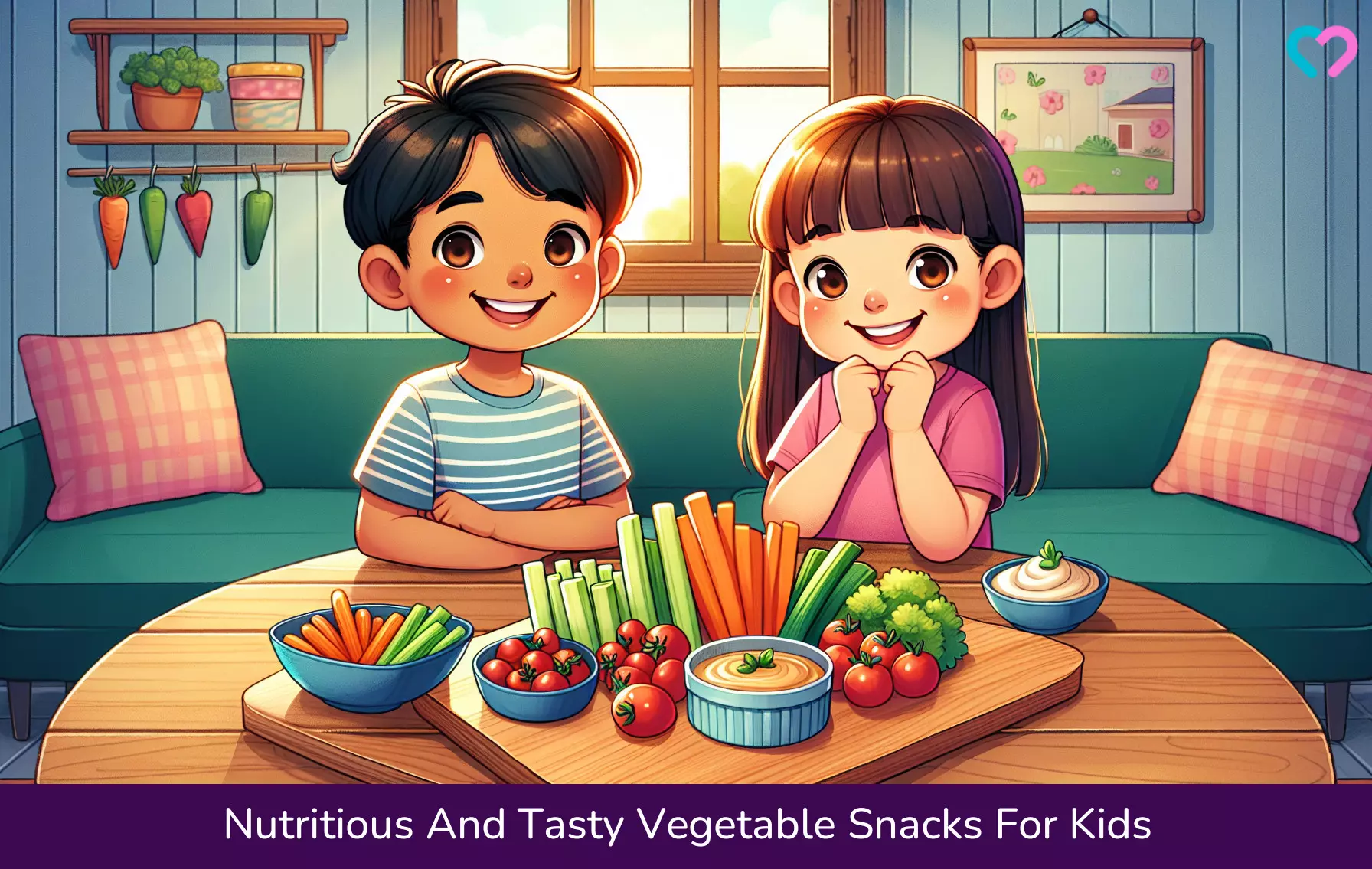
Image: Dalle E/MomJunction Design Team
Elevate your kids’ dining experience with homemade veggie nuggets – a blend of mixed vegetables transformed into crispy delights. Master the art of crafting these wholesome treats with ease using the step-by-step guide in the video.
Personal Experience: Source
MomJunction articles include first-hand experiences to provide you with better insights through real-life narratives. Here are the sources of personal accounts referenced in this article.
i. 10 ways to help kids eat fruit & vegetables.https://alovelettertofood.blogspot.com/2015/02/10-ways-to-help-kids-eat-fruit.html
References
- When Should My Kids Snack?
https://www.eatright.org/food/planning/meals-and-snacks/when-should-my-kids-snack - Smart Snacking for Adults and Teens
https://www.eatright.org/not-found - Dietary Guidelines For Americans 2015-2025 Eighth Edition.
https://odphp.health.gov/sites/default/files/2019-09/2015-2020_Dietary_Guidelines.pdf - Fruit and Vegetable Consumption Among Children and Adolescents in the United States, 2015–2018.
https://www.cdc.gov/nchs/products/databriefs/db391.htm - Celery, raw.
https://fdc.nal.usda.gov/food-details/2346405/nutrients - Vegetables and Fruits.
https://hsph.harvard.edu/department/nutrition/ - Vegetables: tips to encourage children to eat more
https://raisingchildren.net.au/toddlers/nutrition-fitness/healthy-eating-habits/vegetables - Cucumber, with peel, raw.
https://fdc.nal.usda.gov/food-details/2346406/nutrients - Squash, summer, green, zucchini, includes skin, raw.
https://fdc.nal.usda.gov/food-details/2685568/nutrients - Quinoa, cooked.
https://fdc.nal.usda.gov/food-details/168917/nutrients - Eggplant, raw.
https://fdc.nal.usda.gov/food-details/169228/nutrients - Progress on children eating more fruit and not vegetables
https://stacks.cdc.gov/view/cdc/24476 - Dhandevi Pem and Rajesh Jeewon (2015); Fruit and Vegetable Intake: Benefits and Progress of Nutrition Education Interventions- Narrative Review Article.
https://www.ncbi.nlm.nih.gov/pmc/articles/PMC4644575/ - 5 Great Reasons to Cook with Your Kids.
https://www.healthychildren.org/English/healthy-living/nutrition/Pages/Cooking-With-Your-Children.aspx
Community Experiences
Join the conversation and become a part of our nurturing community! Share your stories, experiences, and insights to connect with fellow parents.
Read full bio of Dr. Sonal Dhemla
- Karen is a functional nutritionist specializing in metabolic and digestive health in Vancouver, WA. She runs her private practice Real Food Matters, which focuses on continuous glucose monitor (CGM) programs to help people optimize their blood sugar and prevent diabetes. She offers telehealth services and classes nation-wide.
 Karen is a functional nutritionist specializing in metabolic and digestive health in Vancouver, WA. She runs her private practice Real Food Matters, which focuses on continuous glucose monitor (CGM) programs to help people optimize their blood sugar and prevent diabetes. She offers telehealth services and classes nation-wide.
Karen is a functional nutritionist specializing in metabolic and digestive health in Vancouver, WA. She runs her private practice Real Food Matters, which focuses on continuous glucose monitor (CGM) programs to help people optimize their blood sugar and prevent diabetes. She offers telehealth services and classes nation-wide. - Dr. Lisa Hugh is a registered dietitian and a certified Leap Therapist (food sensitivity expert) with over 15 years of experience. She is the founder of Single Ingredient Groceries and runs her private practice in Maryland, US. Dr. Hugh believes that there is no one-size-fits-all diet and hence designs individualized diet regimens for her clients.
 Dr. Lisa Hugh is a registered dietitian and a certified Leap Therapist (food sensitivity expert) with over 15 years of experience. She is the founder of Single Ingredient Groceries and runs her private practice in Maryland, US. Dr. Hugh believes that there is no one-size-fits-all diet and hence designs individualized diet regimens for her clients.
Dr. Lisa Hugh is a registered dietitian and a certified Leap Therapist (food sensitivity expert) with over 15 years of experience. She is the founder of Single Ingredient Groceries and runs her private practice in Maryland, US. Dr. Hugh believes that there is no one-size-fits-all diet and hence designs individualized diet regimens for her clients.
Read full bio of Swati Patwal
Read full bio of Rohit Garoo
Read full bio of Nida Shaikh







